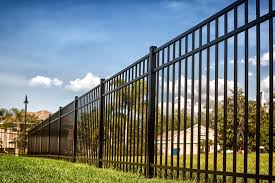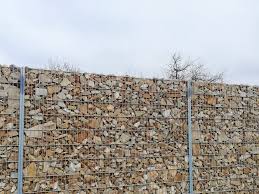
Boundaries Beneath: The Psychology of Fences
Over and above their functional energy, fences maintain serious symbolic value in individual communities, symbolizing principles of possession, personal identity, and societal restrictions. As actual symptoms of borders, fences (ploty) form our perceptions of room and effect our relationships together with the developed environment. Let’s discover the much deeper significance behind fences and understand why they can be not just structures—they are icons of individual traditions and modern society.
1. Management and Territory:
fences (ploty) represent management and territorial restrictions, marking where one house ends and the other begins. By understanding limitations, fences set up feelings of management and control of terrain, reinforcing individual or group identity. In countryside regions, fences function as concrete marker pens of property ownership, delineating areas, pastures, and property collections. In urban options, fences demarcate individual residence from open public space, asserting possession and exclusivity.
2. Social Division and Addition:
Fences could also signify interpersonal divisions and exclusions inside society. Higher surfaces and barriers may indicate break up and inequality, developing bodily limitations that split neighborhoods based upon socio-financial position or another aspects. On the other hand, fences with wide open gates and very low walls signify inclusivity and relationship, appealing discussion and cultivating a sense of neighborhood. The look and visibility of fences reveal underlying societal dynamics and potential components.
3. Cultural Personal identity:
In lots of cultures, fences hold strong cultural importance and so are imbued with significance that reflects ethnic ideals and practices. By way of example, in many cultures, ornate fences are signs of status and prestige, displaying wealth and wealth. In contrast, in other civilizations, simple and easy useful fences could be respected for usefulness and utilitarianism. Understanding the cultural context of fences allows us to appreciate their symbolic value in different societies.
4. Mental Restrictions:
Fences also can signify mental health limitations that define private area and autonomy. By making bodily obstacles, fences give people who have a feeling of safety and privacy, allowing them to set up borders and manage usage of their individual area. This sense of limit handle is important for maintaining psychological well-becoming and social relationships, since it allows people to assert their autonomy and safeguard their private restrictions.
5. Environment Affect:
The proliferation of fences has enviromentally friendly implications, especially in normal landscapes and animals habitats. Substantial fencing can fragment habitats and affect wildlife corridors, influencing biodiversity and ecosystem wellness. Nevertheless, eco-helpful fencing choices, for example animals-pleasant models and permeable obstacles, offer you alternatives that balance man demands with enviromentally friendly preservation. By decreasing their environmental footprint, fences can give rise to the preservation of all-natural scenery and wildlife habitats.
In summary, fences are not only physical buildings these are symbols that signify complex societal, cultural, and emotional dynamics. As guardians of restrictions, fences design individual interaction and countryside, showing and reinforcing social ideals and norms. Appreciating the symbolic incredible importance of fences enriches our comprehension of the built surroundings and our romantic relationship with the terrain.




